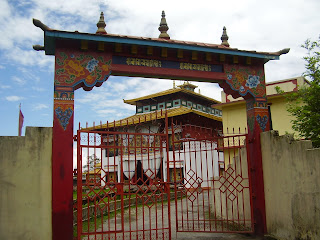The story of the plot of the movie goes as follows:
"After a seven year absence, Dr. Ram Singh returns to his village intending to sell his land and go back to the city. He finds that the peasants are being mistreated by the local landlord and the landlord's sister, Sushma. The doctor and Sushma were once in love but in his absence she has become an embittered widow. Unwilling to see the peasants suffer further, Ram decides not to sell and opens a school and a hospital instead. When plague breaks out, the doctor saves Sushma's son and the flames of love are rekindled. However, social mores prevent any opening of hearts and (unable to express her feelings in any other way) Sushma resorts to further acts of cruelty in order to prevent Ram from leaving. Meanwhile, her brother stirs up hostility against the pair by spreading malicious rumours which excite the superstitious villagers leading to a trial and a watery climax."
I remember watching the movie as a kid of not more than 9-11 years old, but still the memory of the movie are fresh in my mind specially the memorable songs of the movie.
The movie, being made in the independent India, has the blend of patriotism and sense of appreciation among youth for the well being of peasants and villagers. The decision of Dr. Ram Singh (dilip kumar) to stay back in the village and cure peasants, against the social and medical miseries ascribed to the fact that many young educated men and women of those times beleived in this thought and followed their instinct to do so. The two major issues of that times whih were taken with serious note in the movie were widow remarriage and plague. which had remained major sore for almost every village.
The movie had tremendous touch of rural life and folk culture and mute love of Ram Singh (Dilip Kumar)and Sushma (Nalini Jaywant)adds to the melodrama and nostalgia of good old times of Black and White cinema. Along with many of its folk base beautiful songs, one which remains most hummable and favorites of many is Kare badra...shot in the backdrop of monsoon, it remains relevant and melodious forever, now when I look to the weather around which is windy and filled with rain, no doubts leaves one little withdrawn to set this song in motion again.
Dilip Kumar and Nalaini Jaywant were two great yet temperament wise fairly different actors, Nalini remains for all the cinema viewers a docile and low profile actress who was more like an obedient performer dancing and acting as per the storylines, Dilip Kumar on the other hand remains a flamboyant romantic, therefore it seems so strange that I am not getting no picture of this pair of the movie together in google!...
.jpeg)





















